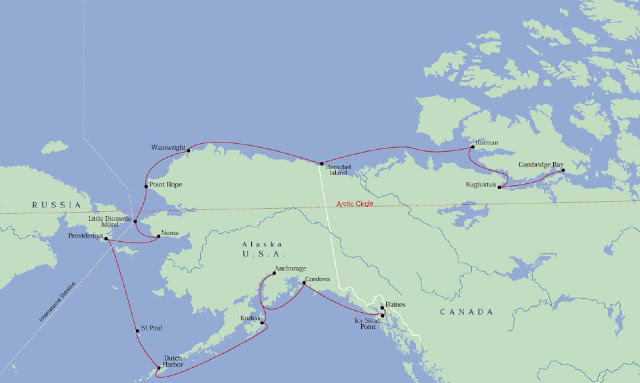25 Aug
Hello Travelers,
I will be driving a zodiac and cruise Cape Parry it is located at the northern end of the Parry Peninsula, Northwest Territories, which extends into Amundsen Gulf. The closest community is Paulatuk, approximately 100 kilometres to the south. The cape has several limestone outcrops that form coastal cliffs rising 20 meters above sea level. A rich marine environment is created by upwelling currents around the cape. Offshore, a polynya produces open water in the ice near the cape and islands. It is this combination of safe nesting habitat on the cliffs with a nearby reliable area of open water that allows for a small seabird colony to exist here.
This site is home to the only thick-billed murre (aka Brunnich's guillemot) colonies in the western Canadian Arctic. The main colony is quite small by murre standards, with around 1,000 birds. Although not numerically significant, these colonies are noteworthy since the nearest colonies are at least 1,300 kilometres away to the west in Alaska or to the east on Prince Leopold Island.
Elsewhere on the cape, beaches of sand and gravel form the coastline and many bays and small inlets exist. The peninsula is dotted with ponds and small lakes with sparse tundra vegetation in between.
There is a DEW line site on the peninsula, and we likely will see the buildings and attendant antennae and radar domes. Distant Early Warning system was an array of missile detecting facilities strung across Alaska and the Canadian Arctic during the height of the Cold War. Many of these stations, including this one, are now automated and operating with vastly different technology than existed in the 1950�s.
See you there..
Rinell :-)










